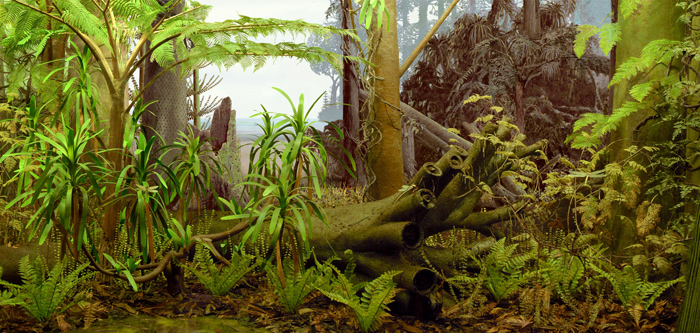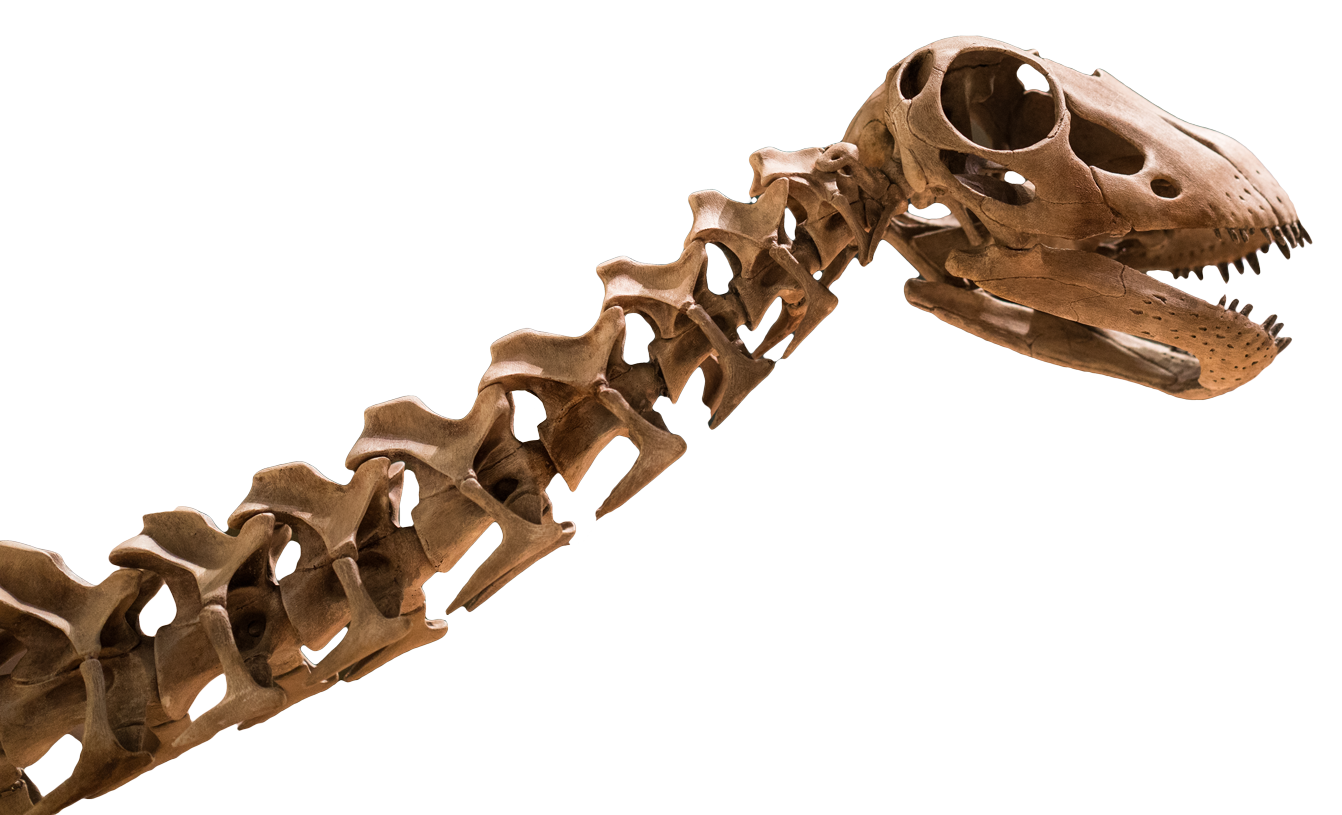Pangaea forms; an Ice Age begins
During the Carboniferous Period, plate tectonic activity resulted in nearly all of the continents coming together to form Pangaea (literally, “all Earth”), which stretched from the south pole across the equator. Toward the end of the Carboniferous, massive continental glaciers formed on the south pole initiating an ice age that endured for over 30 million years, ending in the Permian.

Peat Swamps flourished
Near the equator, abundant plant growth that outpaced decay and rapid burial produced vast deposits of peat (partially decomposed plant debris) in swamps. Coal deposits in Oklahoma originated as these equatorial peat swamps when Oklahoma too was positioned just barely south of the equator. In these swamps grew plants almost wholly alien to us by comparison to the plants alive today. In the wettest parts of the swamps, lycophytes dominated; these lycophytes grew to over 100 feet (33 meters) tall, were supported to that height largely by bark rather than wood, and reproduced with spores instead of seeds. In the drier parts of swamps, horsetail-relatives and ferns as tall as trees and Medullosans that with 9-foot (3 meter) leaves grew.
Can I find Carboniferous plants in Oklahoma?
Yes. Rocks of the Carboniferous Period are widespread in Oklahoma, especially in eastern Oklahoma. Oklahoma’s history of coal mining bears witness to this abundance.


